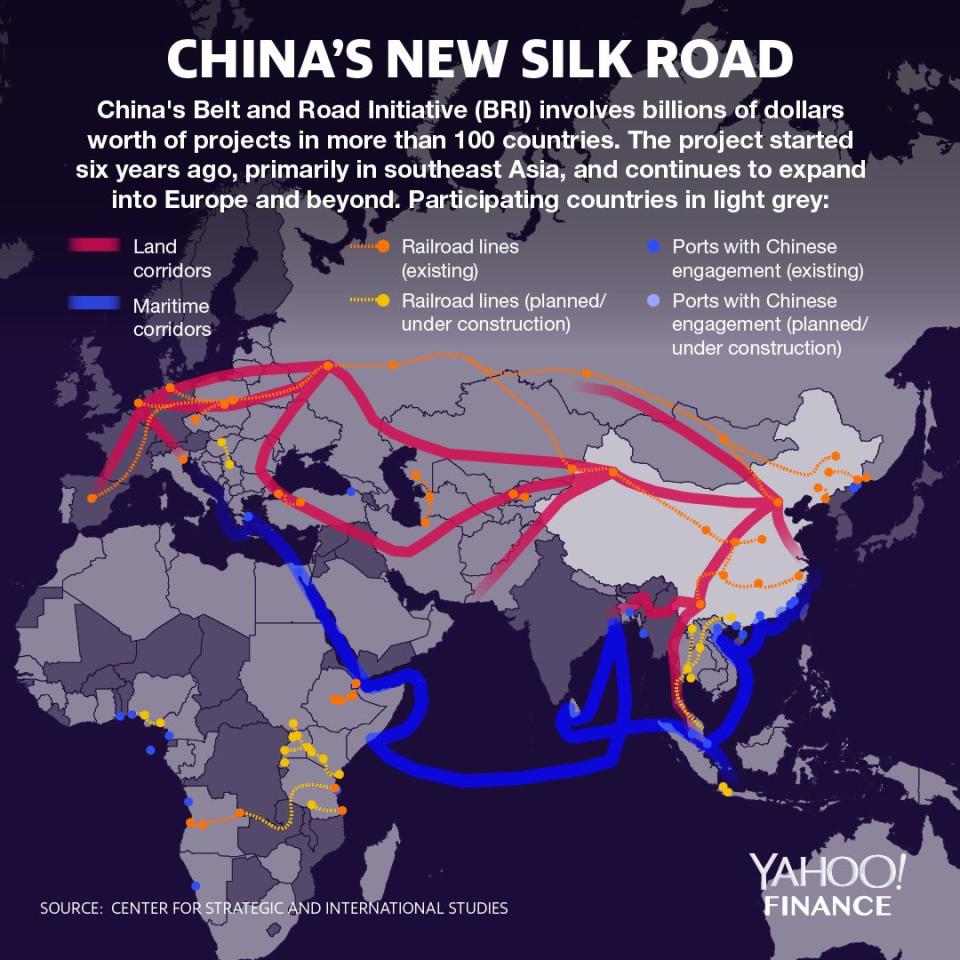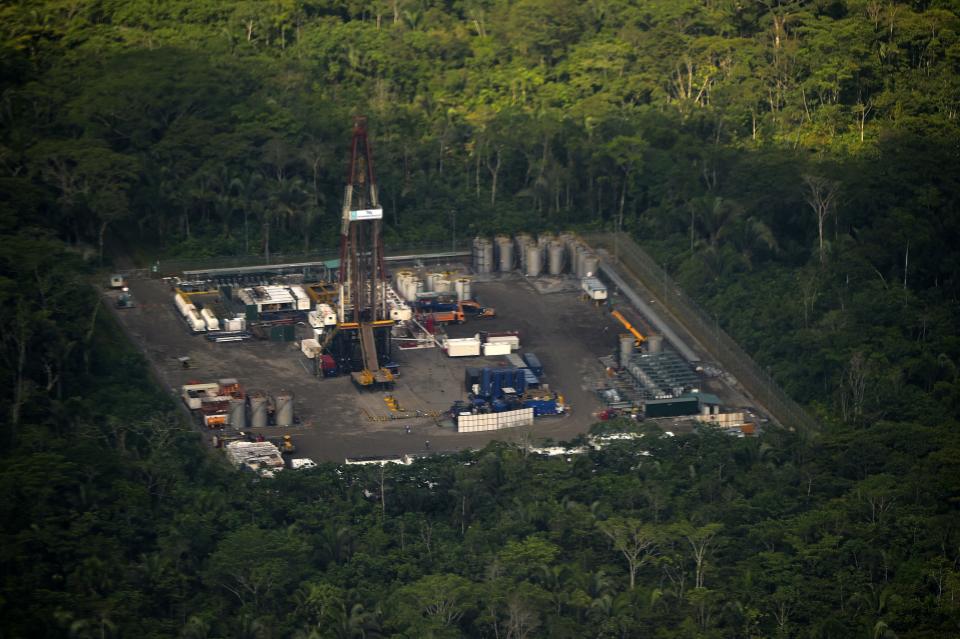7 problems created by China's New Silk Road
China’s new Silk Road — or the Belt and Road Initiative (BRI) — is fraught with risks for the countries involved, a new study warns.
With the Belt and Road Forum expected to convene in Beijing from April 25 to 27, the study by D.C-based think tank Center for a New American Security (CNAS) found that countries considering taking on Chinese investment — loans and financial obligations from China that are part of its BRI — should worry about specific risks, which range from financial sustainability to the erosion of national sovereignty.
“Under the umbrella of the Belt and Road, Beijing seeks to promote a more connected world brought together by a web of Chinese-funded physical and digital infrastructure,” the authors wrote. “The infrastructure needs in Asia and beyond are significant, but the Belt and Road is more than just an economic initiative; it is a central tool for advancing China’s geopolitical ambitions.”

On top of foreign policy interests, China’s big push was also born out of fears over waning economic growth, Thomas Eder, a research associate at German think-tank Mercator Institute for China Studies told Yahoo Finance in a previous interview.
“It’s been almost a cliché that the Chinese government is legitimate as long as there is 7.5% growth,” Eder said. “So [it] didn’t have that anymore. But they’re building up the second pillar of legitimacy with this collection of foreign policy successes, prestige, influence ... worldwide.”
These are the 7 challenges presented by CNAS:
Erosion of national sovereignty
The report explained that Chinese investments most often into capital-hungry developing countries like Djibouti and Pakistan have given Beijing “control over select infrastructure projects through equity arrangements, long-term leases, or multi-decade operating contracts.”
Lack of transparency
Those projects often entailed “opaque bidding processes for contracts and financial terms that are not subject to public scrutiny,” they added, which usually means a Chinese loan is followed by a Chinese contractor on the construction site.

Unsustainable financial burdens
But these loans— some of which come up to billions of dollars — often end up putting countries in a fiscally worse-off position, they explained. This could be increased risk of default, repayment difficulties, or it could even be such that “certain completed projects have not generated sufficient revenue to justify the cost.”
Disengagement from local needs
The authors also point out that on top of Chinese banks requiring Chinese contractors get the jobs, the contractors don’t even “transfer skills to local workers, and sometimes involve inequitable profit-sharing arrangements,” which didn’t benefit the local community at all.
Geopolitical risks
In some cases, China-funded projects even bore the possibility of espionage, the authors warn. The projects could in some instances possibly “compromise the recipient state’s telecommunications infrastructure or place the country at the center of strategic competition between Beijing and other great powers,” they wrote.
Negative environmental impacts
With so many of these projects being massive infrastructure undertakings — from power plants to dams — the authors said that “some instances have proceeded without adequate environmental assessments or have caused severe environmental damage.”
Significant potential for corruption
Finally, the opacity and the convoluted structure of these projects created ripe conditions for corruption, especially “if they have a high level of kleptocracy,” the authors said, particularly in the form of “payoffs to politicians and bureaucrats.”

Ecuador is a microcosm of BRI risks
The country that exemplified most of the challenges above was Ecuador — particular with its Coca Codo Sinclair Hydroelectric Dam.
Chinese financing of the dam is “a prime example of how infrastructure projects facilitated by Beijing can run against the host country’s public interest, corrupt institutions, and indebt recipient governments,” the authors argued.
Ecuador is presently dealing with an economic crisis and the IMF expects its economy to contract by 0.5% this year.
The country’s debt ballooned under former President Rafael Correa, who racked up billions in high-interest loans from China. Ecuador’s outstanding debt to China currently was at $6.5 billion, according to the country’s economy ministry.
The outstanding debt has the possibility of eroding sovereignty because the development and construction “has mainly been controlled by enterprises linked to the Chinese government,” they said.

The loans at its core were also opaque and had stipulated that “Chinese companies must be made the general contractor,” effectively preventing open bidding.
The dam project, in particular, was financed by a $1.7 billion loan from the Chinese government-controlled Export-Import Bank, which charged a 7% interest over 15 years, according to a report by the New York Times. Coca Codo represents 9% of what Ecuador owes to China, the authors added.
And on top of that, the Chinese have made it such that they get repaid not in dollars — but in oil. This means that even if Ecuador defaults on the loans, they get to keep 80% of its oil exports, “a key foundation of the country’s economy,” the authors said.
Finally, after all this trouble, the dam itself isn’t operable, which provides no economic benefits, the authors highlighted. “Water released from the dam causes flooding that cripples some downstream farming and has drowned farmers.”
“China took advantage of Ecuador,” Ecuador Energy Minister Carlos Pérez said. “The strategy of China is clear. They take economic control of countries.”
Aarthi is a writer for Yahoo Finance. Follow her on Twitter @aarthiswami.
Read more:
EU on the New Silk Road: China is both a 'partner' and a 'systemic rival'
The new Silk Road is China's 'second pillar of legitimacy' — and Europe is starting to buy in
Follow Yahoo Finance on Twitter, Facebook, Instagram, Flipboard, SmartNews, LinkedIn,YouTube, and reddit.


